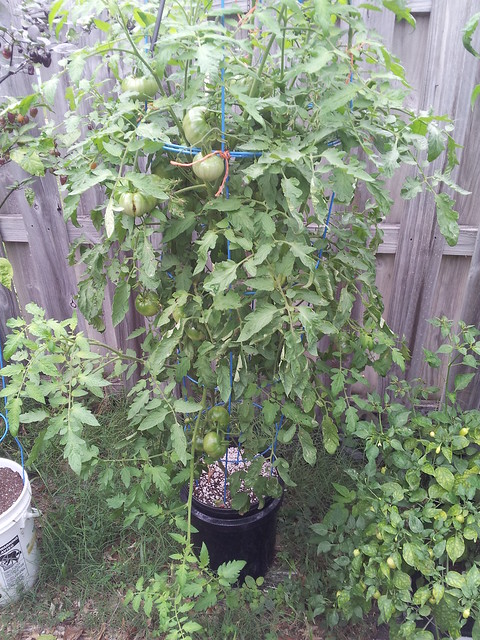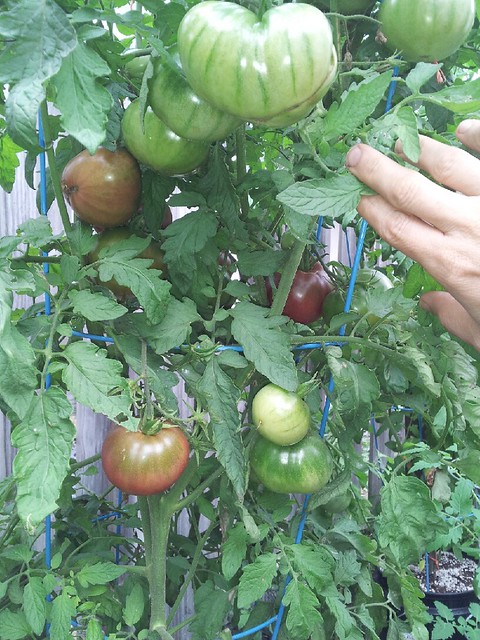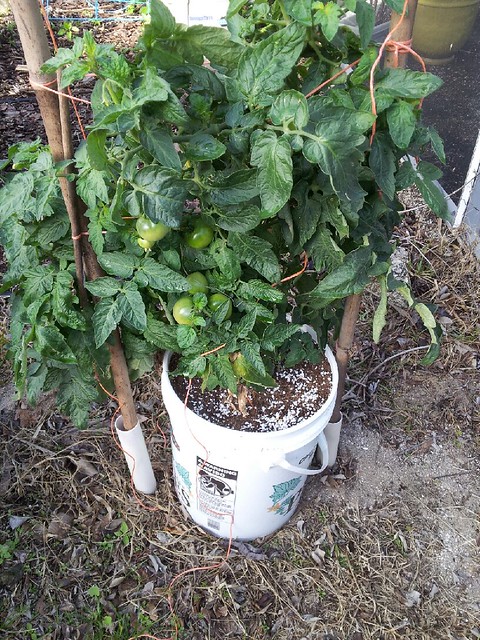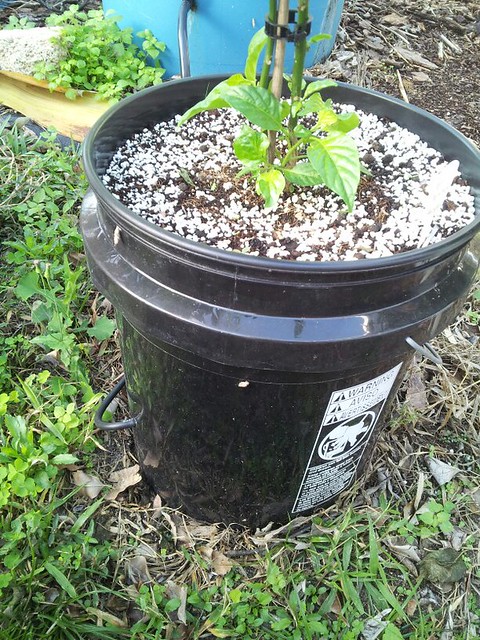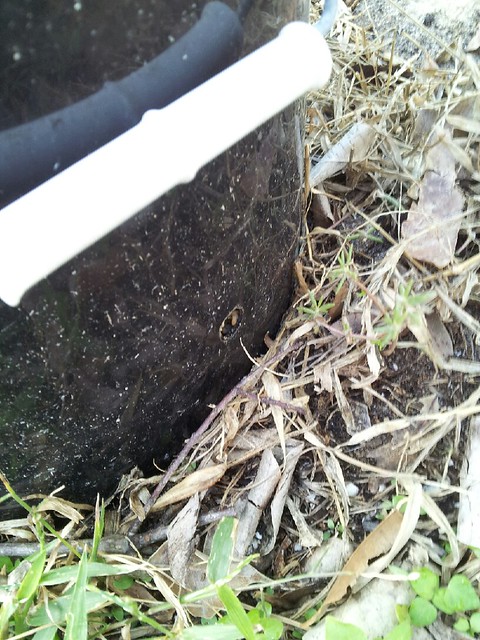This was an early tomato, but you can see peppers reaching over into the pic on the left hand side.
.
.
.
Good yields
.
.
.
A current crop (taken today). Most of my peppers are a bit shocked right now, as we've had a few days in the 50's, and nights in the 40's.
.
.
.
Red Dominican Habanero. You can see the plumbing line at the bottom left. It comes in just above the perlite at the bottom of the bucket, and has a 2GPH flow reducer on it. I put it on the inside, so that that it becomes a friction connector. (it's tight in the drilled hole when assembled)
.
.
.
1/2 Inch drain hole. About 3-3.5 inches above the bottom of the bucket. (measured from the outside)
.
.
.
The method is simple. I drill 2 holes - 1 about 3.5" from the bottom of the bucket (on the outside), and another about a half inch above that one, on the opposite side. Hole #1 is 1/2" diameter, and is a drain. Hole #2 is just slightly bigger than the drip tubing, and is a feed line.
.
After drilling, a layer of perlite is added, until it's about an inch above the drain hole. Then, atop that, the rest of the container is filled with a mixture, as follows: 3 part coco coir, 1 part perlite, 1 part worm castings OR aged rabbit manure. (fresh rabbit manure, if that is all that is available.
.
I feed every other time with nutrient, typically, and plain water via the irrigation system, the rest of the time.
.
Nutrient is homemade fertilizer. However, Neptune's Harvest tomato and veg formula works well, and I did a very successful experiment with the CNS17 Grow.


